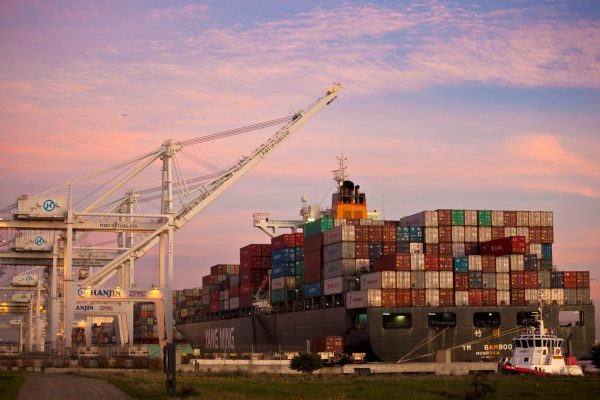The US–China dispute centres around two issues. The first is a bilateral trade imbalance, which was roughly US$370 billion based on US data or US$270 billion based on Chinese data in 2017. The second is China’s allegedly unfair market competition practices, including issues such as the protection of intellectual property rights, the role of the Chinese state in resource allocation and opening up China’s services markets to foreign investors. Underlying this is the uncertainty about the future of the United States’ place in the international order and the risk of conflict between a rising power and the ruling one.
The bilateral trade imbalance shouldn’t be an issue. China’s current account surplus narrowed from 11.8 per cent of GDP in 2007 to 1.4 per cent in 2017. And the bilateral trade imbalance between China and the United States is a result of the global supply chain — Chinese exports to the United States contain a lot of intermediate goods produced by many other Asian countries.
The issues relating to unfair market competition practices are quite tricky. On the one hand, while acknowledging that China should and can do better in this area, many US accusations — especially those in the US Trade Representative’s annual Special 301 Reports — are made without supporting evidence.
For instance, although the Chinese government adopted the ‘market-for-technology’ policy to encourage foreign direct investment, where is the evidence to validate the accusation that technology transfer occurred under pressure from the Chinese government and not based on foreign companies’ own commercial calculations?
The United States also claims that China’s Made in China 2025 policy is a program of government subsidies that disadvantages foreign companies. In reality, the Chinese government hasn’t yet put together any detailed policy components.
On the other hand, US demands are in line with the Chinese government’s own reform plan announced at the Third Plenum of the 18th National Party Congress — improving protection of intellectual property rights, reducing government intervention in resource allocation and opening up the services sector. It should be possible for the two sides to find some common ground.
But the current dispute also creates complications for the Chinese government. No government wants to be seen as giving in to foreign pressure and the Chinese government is no exception. The United States is also now demanding ‘reciprocity’, asking China to reach the same levels of openness as the United States, which could be practically difficult to implement in the short term.
Given US President Donald Trump’s unreasonable demands, some Chinese experts recommend that the Chinese government adopt a ‘tit-for-tat’ strategy. This would be unwise — the priority is not to devise specific ‘trade war’ policy instruments but rather to get the bigger picture right.
China’s greatest interest today is continuing its economic development. China has been a major beneficiary of the open trade and investment regime built by the United States. It should be in China’s interest to maintain that international order, regardless of US actions today. The true meaning of economic development is to improve people’s living standards. China should remember this and never set the task of challenging or displacing the United States as its ultimate motivation for economic development.
Facing US economic provocations, the Chinese government will have to retaliate from time to time. But it will focus more on continuing its own reform and opening up policies.
In late 2017, China’s State Council introduced a set of policy measures to further open China’s financial sector to the world. And in early 2018, Chinese President Xi Jinping announced more ambitious reform and opening policy measures in four areas: relaxing restrictions on the entry of foreign firms in Chinese markets, creating a more attractive investment environment in China, strengthening the protection of intellectual property rights and proactively increasing imports. Implementation of these and other measures should surely help ease economic frictions between China and the rest of the world.
The Chinese government may also need to improve its communication with the international community. Some of the frequently used policy terms in China may be interpreted differently overseas, which could cause unnecessary misunderstanding and hostilities. Made in China 2025 provides a case in point. Without specifying detailed steps and measures to promote industrial upgrading, the policy is causing widespread concern not only in the United States but around the world. Some Chinese and non-Chinese experts’ overly confident assessment of Chinese economic strength is both inaccurate and counterproductive.
The greatest threat posed by the US–China trade dispute in the near-term is the danger to China’s financial stability. The dispute raises economic and policy uncertainty in China, slows economic activity and worsens China’s external account balances. All of these could negatively affect investor confidence and increase financial instability.
This is particularly worrisome because systemic financial risk is already a major problem in China today. The Chinese government needs to take extra caution in dealing with the United States’ economic provocations. It should pay more attention to coordination of economic policies in different areas and implement macroprudential regulations to reduce systemic financial risk.
Yiping Huang is Professor of Economics at the National School of Development, Peking University.

